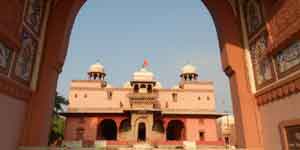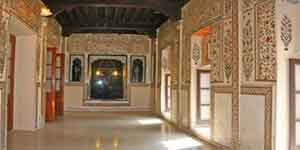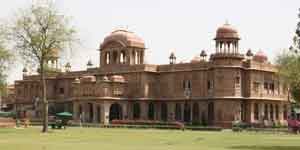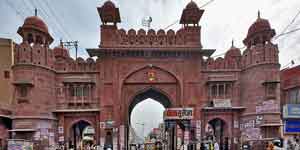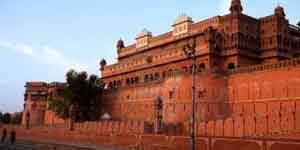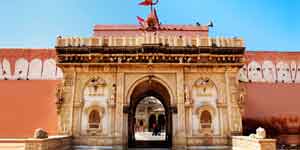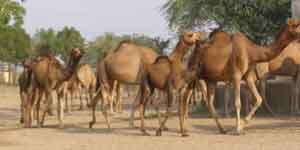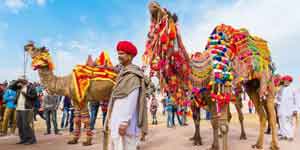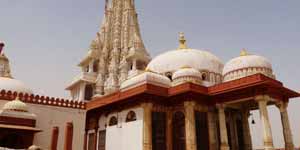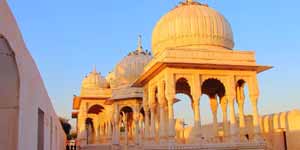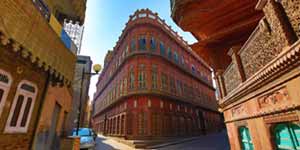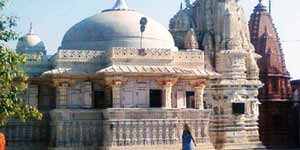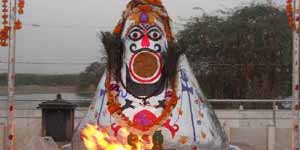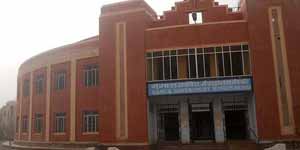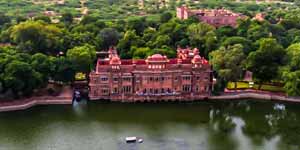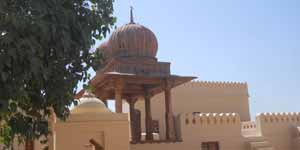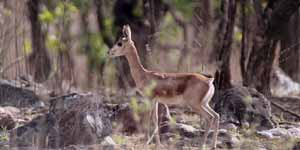

Bikaner Monuments Entry Fee & Timing- Bikaner is located in north western part of Rajasthan. It is a well-known district in the state. Bikaner has a rich historical tradition and thousands of tourists from all over the year come here to get a feel of the rich tradition and culture. Bikaner attracts thousands of travelers for its rich historical tradition and culture. The city consists of beautiful forts, castles, religious shrines and other historical monuments.
Bikaner is famous for its Camels and located near Bikaner is the Government National Research Centre specializing in camel research. The Government camel breeding farm can be found 9km southeast of Bikaner. It was set up in 1975 and breeds nearly half of the camels in India. It is best to visit here in the late afternoon when the camels return from their grazing.
Many tourist peoples and travellers travel to Bikaner to visit the famous Karni Mata Temple at Deshnokewhere rats are worshipped. The Karni Mata Temple is located 30 km south of Bikaner at Deshnoke but is generally visited while people stay in Bikaner.
It was constructed by Maharaja Ganga Singh in the early 1900s as a tribute to the rat goddess, Karni Mata. The temple is home to 20,000 rats. Karni Mata, was a mystic matriarch from the 14th century, and thought to be an incarnation of Durga, the goddess of power and victory.
When the child of one of her clansmen died she attempted to bring it back to life. However Yama, the god of death told her the child had already been reincarnated. Karni Mata bargained with Yama to make a promise that all the people from her tribe would be reborn as rats until they could be born back into the clan.
In Hinduism,this cycle of transmigration is known as samsara and this is why Karni Mata's rats are treated like royalty. Devotees coming to the temple make offerings to them generally in form of milk, grains,and sweets.
Junagarh Fort
One of the principal monuments of Bikaner is the Junagarh Fort. Constructed in 1593 AD by Raja Rai Singh, it is surrounded by a deep moat, where is believed crocodiles were bred. There are 37 bastions that defend the fort and two entrance gates, the main being known as the ‘Suraj Pol’ or the Sun Gate. Within the premises of this majestic and impenetrable fortress, one will come across numerous palaces, temples and pavilions. Made of red sandstone and marble, these palaces strikingly feature intricately carved towers, alongside their picturesque amalgamation of courtyards, kiosks, windows and balconies. These palaces include ‘Karan Mahal’, ‘Phool Mahal’, ‘Ganga Niwas’, ‘Anup Mahal’, ‘Dungar Mahal’, ‘Chandra Mahal’ and ‘Rang Mahal’. These display spellbinding paintings, mirrors and glass artefacts. The ‘Har Mandir’ is the majestic chapel where the royal family worships their gods and goddesses. Museums in the fort spectacularly provide a peep into the grandeur of past Maharanas’ lifestyle.
Lalgarh Palace
The Lalgarh Palace is one of the most popular and most visited monuments in Bikaner. It was built by Maharaja Ganga Singh as his residential palace ‘Laxmi Niwas’ originally, the first and most impressive wing of this exquisite masterwork in red sandstone. Designed in Indo-Saracenic style in 1896, by Sir Samuel Swinton Jacob, one of the most accomplished British architects ever to work in India; he later enlarged it in the beginning of the 20th century.
With the finest of materials and carved stonework employed in its construction, this gigantic palace houses the Shri Sadul Museum containing the fourth largest private library in the world, the Lallgarh Palace Hotel, a heritage hotel and the Laxmi Niwas Palace, a luxury hotel. The entire three-storey complex is established in a deluxe fashion, featuring drawing rooms, smoking rooms, cards rooms, billiards rooms, guest suites, grand halls, lounges, pavilions, cupolas, Italian colonnades, magnificent pillars and fireplaces. It also has an indoor swimming pool and a dining room with the capacity of accommodating 400 diners to boast of. Notwithstanding his scholarly approach, Jacob's masterwork is clearly influenced by European ideas of form and composition, particularly the interiors. The entire architecture is a conglomeration of Rajput, Mughal and European styles, with fine latticework and filigree work involved. It stands amidst lush sprawling lawns with dancing peacocks and blooming bougainvilleas filling its visual delight. The Lalgarh Palace is an eloquent testimony of the relationship between the princely states and the British Raj.
Gajner Palace
The Gajner Palace constructed on the banks of Gajner Lake by Maharaja Ganga Singh, was the hunting lodge for the royal family. The palace is a heritage hotel today, in the thick of forests of the Gajner Wildlife Sanctuary. The ‘jharokhas’ and carved pillars of the palace boast of the brilliant craftsmanship of traditional artisans. Migratory birds in huge numbers can be seen flocking around. It is the perfect place to spend a quiet evening beside the silent and stunning lake underneath the skies.
The well-known temples of Bikaner include the world famous shrine of Karni Mata in Deshnoke town and the Bhandeswari Jain Temple intricately decorated with rich mirror work, sculpted pillars, gold leaf works and frescoes. The Ganga Golden Jubilee Museum has a fine collection of pottery, paintings and weapons used by Rajputs.
Devi Kund, about 8 kilometres from the Bikaner city, is the royal crematorium place of the royal family of Bikaner, with a range of eye-catchy cenotaphs. These are finely domed and intricately carved pavilions in red sandstone and white marble. The chhatri of Maharaja Suraj Singh is the most attractive of all, with striking Rajput paintings beautifying the ceiling.
